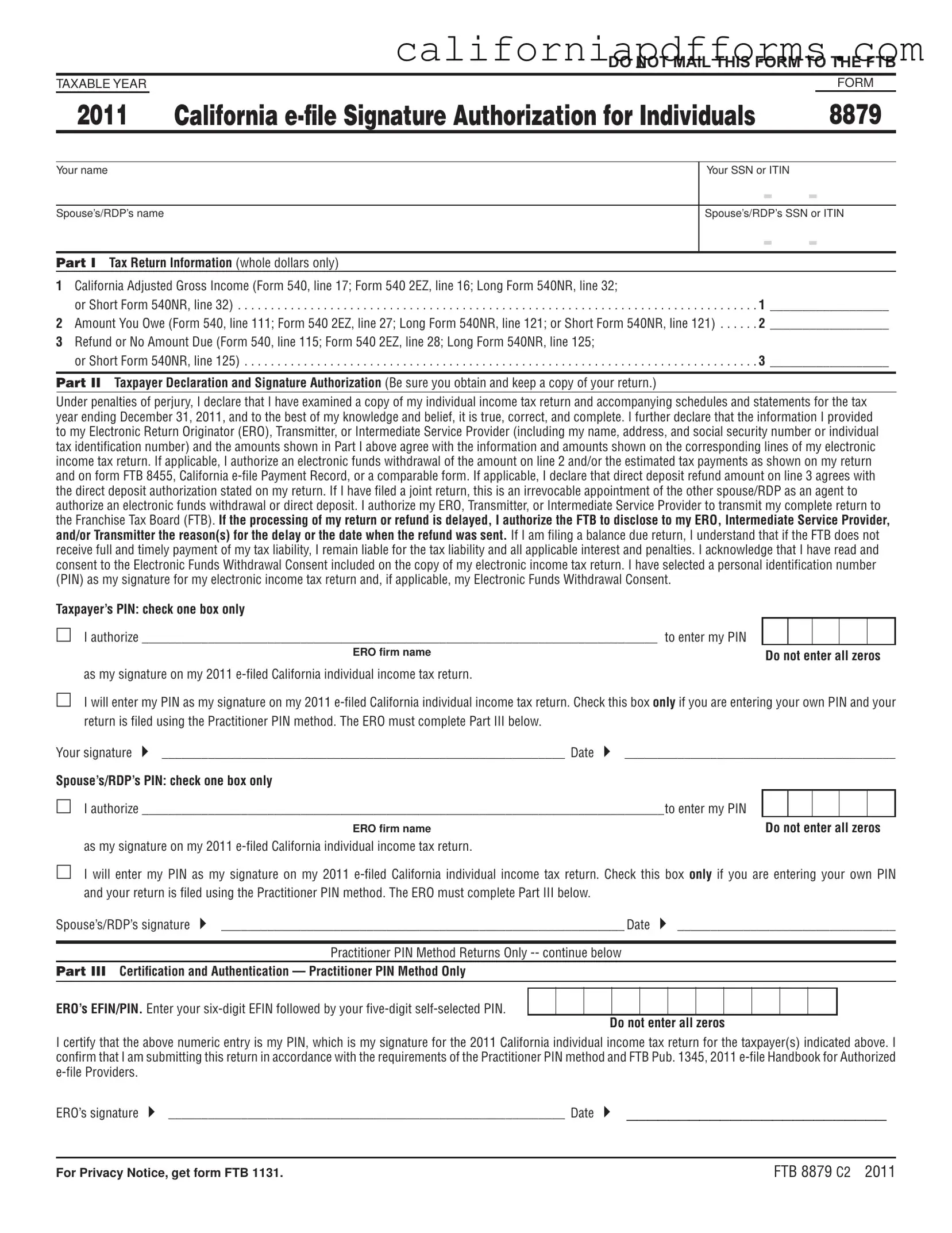Misconception 1: The California 8879 form must be mailed to the Franchise Tax Board (FTB).
This is incorrect. The California 8879 form is not meant to be mailed to the FTB. Instead, it serves as an authorization for your Electronic Return Originator (ERO) to submit your e-filed tax return on your behalf. The acknowledgment of acceptance from the FTB is what proves your return has been filed.
Misconception 2: The 8879 form acts as proof of filing.
Many people believe that the 8879 form itself serves as proof that their tax return has been submitted. This is a misunderstanding. The actual proof of filing is the acknowledgment you receive from the FTB, which includes the date of acceptance for your return.
Misconception 3: You can use the 8879 form for any tax year.
Some individuals think that the 8879 form can be used for multiple tax years. However, this form is specific to the tax year it is filed for. Each tax year requires a separate 8879 form, as it is tied to that particular return.
Misconception 4: The 8879 form is only for individual taxpayers.
This is not entirely accurate. While the 8879 form is primarily designed for individual taxpayers, it can also be used by Registered Domestic Partners (RDPs) filing jointly. Both parties need to authorize the ERO to file their return electronically, ensuring compliance with California tax regulations.
